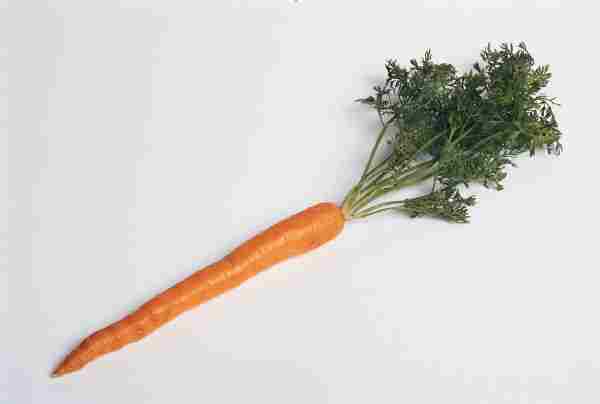Living Frugal
Growing Carrots in the Home Vegetable Garden

Growing carrots does not take a lot of time but you must put forth the time and effort to prepare the carrot bed with rich loose garden soil to ensure you have a great harvest.
It's much harder growing carrots in heavy garden soil which are compact and contain a lot of rocks. If this is your situation, try using a raised garden bed.
The goal is to have loose, rock free garden soil. If the soil seems a bit heavy, add compost to loosen up the soil. Carrots thrive in deep, loose, well-drained garden soil.
You want to start sowing your carrot seeds approximately 3 weeks before the last frost and plant again every 2 to 3 weeks afterward. Most carrots take approximately 80 days to grow to full maturity so you last planting should be 2 to 3 months before the first expected frost. If you are in zone 8 or warmer, you can plant carrots in the fall and winter months.
Planting your Carrots
Make sure the soil is free of rocks and dry lumps. If needed, rake the garden soil until it is free of lumps and rocks. Growing carrots do not fare well amongst rocks and hard garden soil.
Plant 6 seeds per inch and 1/4 deep. If you're like me and you're not one that likes to weed, plant the carrots in rows to make it easier. The carrots will take approximately 3 weeks to sprout. Keep the soil as moist as possible during the germination period to make it easier for the small seedlings to emerge from the soil.
Water ever so gently to keep from washing the small seeds away.
When the seedlings emerge, thin to 1 inch apart to ensure your carrots are not too crowded. Crowded plants will produce crooked carrots. As the tops of the carrots grow thicker, thin them out to about 3 inches apart to give them plenty of room to grow.
To reduce weeds, apply mulch when the seedlings start to develop. The mulch ensures the ground stays moist and your carrots do not dry out.
When your carrots are about the size of your finger, it's time to harvest them. The smaller the carrot, the juicier and more tender it will be. You don't have to harvest all at once, they will last until winter if you keep the garden soil mulched well so it stays moist.
There are many different varieties of carrots. The variety you choose should depend on your preference and garden soil type. If the soil is heavy, the shorter types such as Red-Cored Chantenay and Short and Sweet will work out much better. The Little Finger Variety works well in container gardens.
Varieties of Carrots
- Red-Cored Chantenany - 6 inch roots, works well with heavy soil such as clay, crisp and tender red-orange color.
- Little Finger - 3 to 5 inches long, high sugar content and works well in heavy soil.
- Thumberline - Golf Ball sized round carrot, grows well in heavy soil.
- Danvers Half Long - Tapered roots average 7 inches long, high yield carrots and great for canning recipes.
Carrot Pest
The number one pest when growing carrots are the carrot flies. It's hard to know if you have them until you harvest the crop. If the leaves start looking orange or rusty, there's a chance you could have carrot flies.
These little pests can smell carrots so make sure you weed the carrots in the evening, when it's dry and there's no wind as the scent will attract the carrot fly. The same goes for harvesting your carrots, harvest in the evening.
Pest Prevention
Plant onions in between your carrots as companion plants to keep the carrot fly confused. The fly smells the onions instead of the carrots and flies on by.
Grow carrots in pots or on a table. The carrot fly does not fly any higher than 18 inches above ground level.
May God Bless all your Efforts in your new Home Vegetable Garden!!









